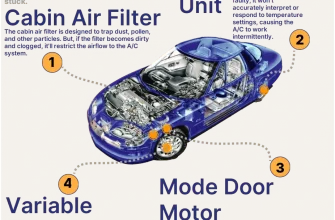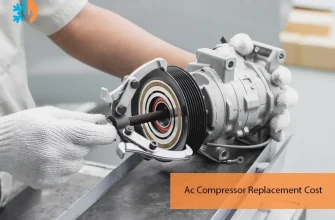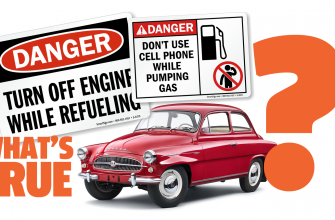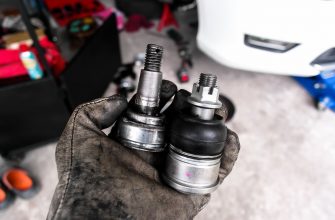In the world of automotive engineering, understanding the intricate systems and components that make up a vehicle is essential. Among these systems, the break point or failure point is a critical aspect that can determine a car’s performance, safety, and longevity. This article delves into the importance of identifying break points in a car’s system, the common causes of failures, and the best practices for prevention and detection.
What is a Break Point?
A break point in a car’s system refers to the point at which a component or system fails to perform its intended function. This failure can lead to various consequences, ranging from minor inconveniences to catastrophic events. Break points are often associated with wear and tear, maintenance neglect, and external factors such as environmental conditions or driving habits.
Common Systems and Components with Break Points
- Braking System: The braking system is perhaps the most critical safety component in a car. Components such as brake pads, rotors, and hydraulic systems can wear down or become compromised, leading to reduced stopping power.
- Engine: The engine is the heart of the vehicle. Issues such as overheating, oil leaks, or faulty fuel injectors can lead to engine breakdowns.
- Transmission: The transmission system, responsible for transferring power from the engine to the wheels, can experience break points from fluid leaks, worn gears, or clutch failures.
- Electrical Systems: Modern vehicles are equipped with complex electrical systems. Break points here can manifest as battery failures, alternator issues, or faulty wiring.
Causes of Break Points
Several factors contribute to the occurrence of break points in a car’s system, including:
- Age and Mileage: As a vehicle ages and accumulates miles, its parts are subjected to wear and tear, increasing the likelihood of break points.
- Lack of Maintenance: Regular maintenance is crucial. Neglecting oil changes, brake inspections, and fluid checks can lead to premature failures.
- Driving Conditions: Harsh environments, such as extreme temperatures or rough terrains, can accelerate the deterioration of a car’s components.
- Manufacturing Defects: Sometimes, components may have inherent flaws due to poor manufacturing practices, leading to early break points.
Identifying Break Points: Signs and Symptoms
Recognizing the signs of impending failures is vital for car owners. Here are common indicators to watch for:
- Unusual Noises: Grinding, squeaking, or clunking sounds can signal issues in the braking system, engine, or transmission.
- Warning Lights: Dashboard warning lights, such as the check engine light, should never be ignored. They often indicate a problem that needs immediate attention.
- Performance Changes: A decline in acceleration, braking responsiveness, or fuel efficiency can suggest underlying issues.
- Fluid Leaks: Puddles or spots under the vehicle can indicate leaks from the engine, transmission, or brake systems.
Best Practices for Prevention and Detection
To minimize the risk of break points in a car’s system, consider the following best practices:
- Regular Maintenance: Schedule routine inspections and maintenance with a qualified mechanic. This includes oil changes, brake checks, and fluid replacements.
- Stay Informed: Familiarize yourself with your vehicle’s manual and understand the recommended maintenance schedule.
- Listen to Your Car: Pay attention to any unusual sounds or performance changes and address them promptly.
- Use Quality Parts: When replacing components, choose high-quality parts that meet or exceed manufacturer specifications.
Identifying the break point in a car’s system is essential for ensuring safety, reliability, and performance. By understanding the common causes of failures, recognizing the signs of potential issues, and adhering to best practices for maintenance, car owners can significantly reduce the risk of encountering break points. Remember, proactive care is the key to a long-lasting and dependable vehicle.









This article provides a comprehensive overview of break points in automotive systems. It’s informative and essential for anyone interested in vehicle maintenance!
I loved how the article breaks down complex systems into understandable parts. A must-read for car enthusiasts and everyday drivers alike!
This article is a treasure trove of information about automotive safety. I feel more empowered to take care of my vehicle after reading it!
Great insights into the common causes of failures! I appreciate the practical tips on maintenance to avoid these issues.
An excellent read! The breakdown of different systems and their vulnerabilities was particularly enlightening for me as a new car owner.
The emphasis on preventative measures is fantastic. This guide will definitely help me keep my car in top shape!